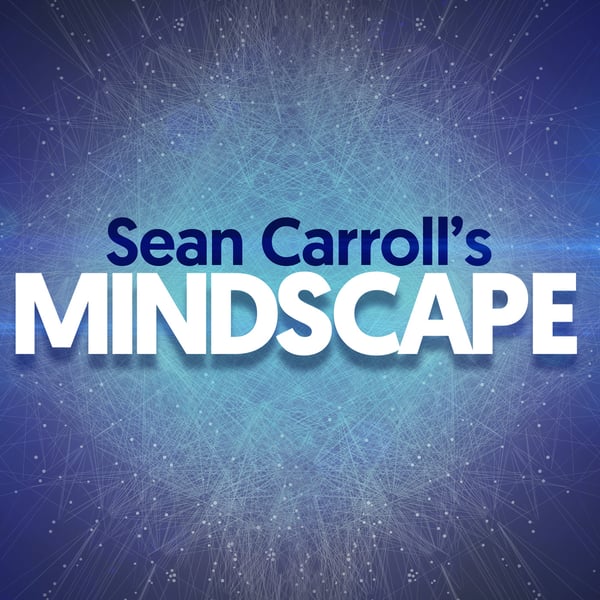66 | Will Wilkinson on Partisan Polarization and the Urban/Rural Divide
Sean Carroll's Mindscape: Science, Society, Philosophy, Culture, Arts, and Ideas
Sean Carroll | Wondery
4.8 • 4.4K Ratings
🗓️ 30 September 2019
⏱️ 113 minutes
🧾️ Download transcript
Summary
The idea of “red states” and “blue states” burst on the scene during the 2000 U.S. Presidential elections, and has a been a staple of political commentary ever since. But it’s become increasingly clear, and increasingly the case, that the real division isn’t between different sets of states, but between densely- and sparsely-populated areas. Cities are blue (liberal), suburbs and the countryside are red (conservative). Why did that happen? How does it depend on demographics, economics, and the personality types of individuals? I talk with policy analyst Will Wilkinson about where this division came from, and what it means for the future of the country and the world.
Support Mindscape on Patreon.
Will Wilkinson received an M.A. in philosophy from Northern Illinois University, and an MFA in creative writing from the University of Houston. He has worked for the Mercatus Center at George Mason University and as a research fellow at the Cato Institute, and is currently Vice President of Policy at the Niskanen Center. He has taught at Howard University, the University of Maryland, the University of Tennessee at Chattanooga, and the Iowa Writers’ Workshop. He has written for a wide variety of publications, including The New York Times, The Economist, The Washington Post, The Atlantic, Vox, and The Boston Review, as well as being a regular commentator for Marketplace on public radio.
- Web site
- Niskanen web page
- The Density Divide: Urbanization, Polarization, and Populist Backlash
- Writing at The New York Times
- Wikipedia
See Privacy Policy at https://art19.com/privacy and California Privacy Notice at https://art19.com/privacy#do-not-sell-my-info.
Transcript
Click on a timestamp to play from that location
| 0:00.0 | Hello everyone and welcome to the Mindscape Podcast. I'm your host Sean Carroll. We've all heard stories of families living in small towns |
| 0:07.6 | where the children grow up and make different decisions. Some of them want to go to the big city and test their fortunes. |
| 0:14.3 | Others want to stay behind and live a comfortable life within the traditions where their family grew up. |
| 0:19.9 | This kind of difference between moving to the city and living out in the country or even the suburbs is |
| 0:25.8 | increasingly becoming a major partisan divide both in the United States and worldwide. |
| 0:31.7 | As Will Wilkinson puts it in a recent paper he wrote, |
| 0:34.7 | there are no Republican cities anymore in the United States. Republicans live in suburbs and the country, |
| 0:41.5 | Democrats live in urban areas. Wilkinson is a vice president for policy research at the NISCAN and Center in Washington, DC. |
| 0:50.0 | He's dug into this question in a paper he wrote called the density divide urbanization, polarization and populist backlash. |
| 0:58.6 | It's not just that people who go to the big cities become liberal and people who stay in the country become conservative, |
| 1:04.6 | there's interesting cause and effect relationships. What kind of people move to the city? |
| 1:10.0 | What kind of people leave the city and move to the country? |
| 1:12.8 | What do changing demographics, immigration and birth rates and so forth? |
| 1:17.3 | What effects do they have on how people think about the world? |
| 1:20.8 | Not just who they vote for, but their outlook on life, their outlook on other countries, their outlook on the economy. |
| 1:27.0 | This difference between city life and suburban and country life is increasingly becoming the important difference |
| 1:33.4 | between different kinds of people here and elsewhere and so it's important to dig into how that's happening and why it is. |
| 1:40.3 | So let's go. |
| 1:47.3 | We'll Wilkinson. Welcome to the Mindscape Podcast. |
| 2:01.8 | Thanks for having me on, Sean. |
| 2:03.8 | So you've written quite a wonderfully interesting research paper about the density divide, which I want to focus on for the podcast, |
| 2:11.6 | but first just to get our listeners oriented as to where we are. |
... |
Please login to see the full transcript.
Disclaimer: The podcast and artwork embedded on this page are from Sean Carroll | Wondery, and are the property of its owner and not affiliated with or endorsed by Tapesearch.
Generated transcripts are the property of Sean Carroll | Wondery and are distributed freely under the Fair Use doctrine. Transcripts generated by Tapesearch are not guaranteed to be accurate.
Copyright © Tapesearch 2025.

